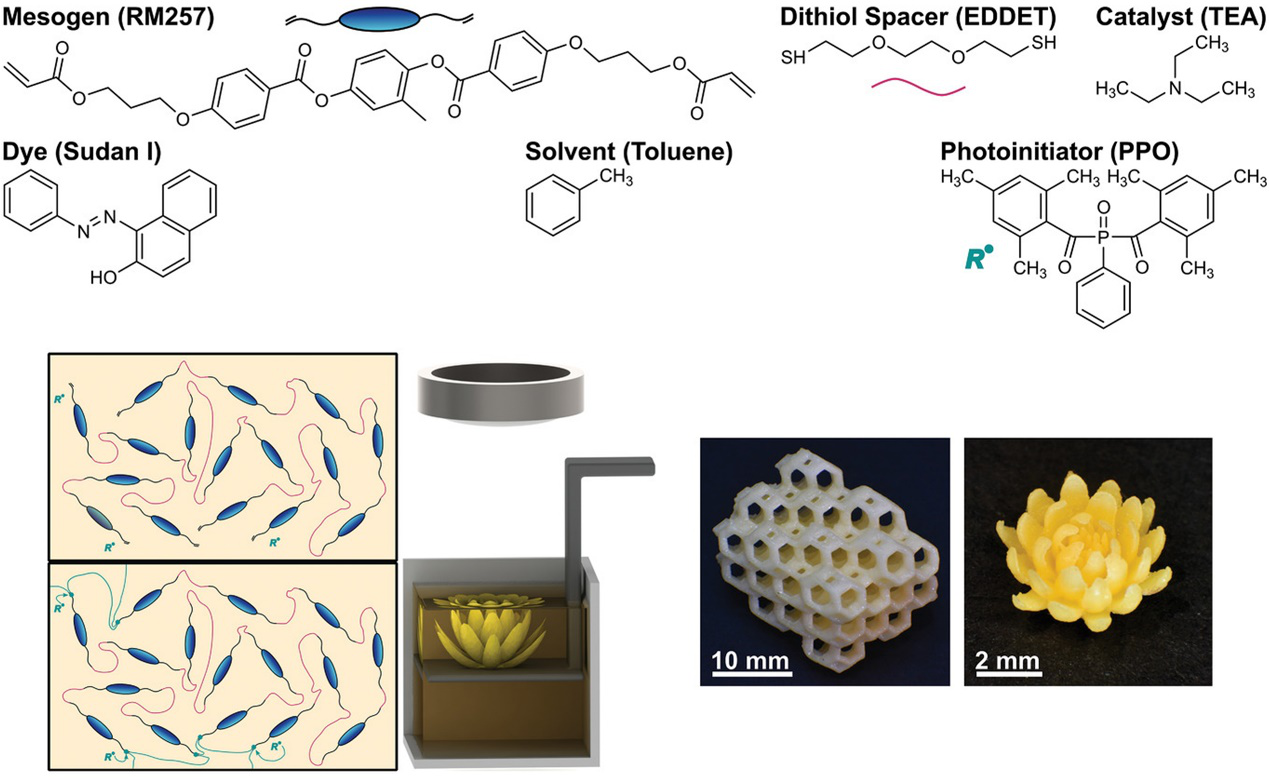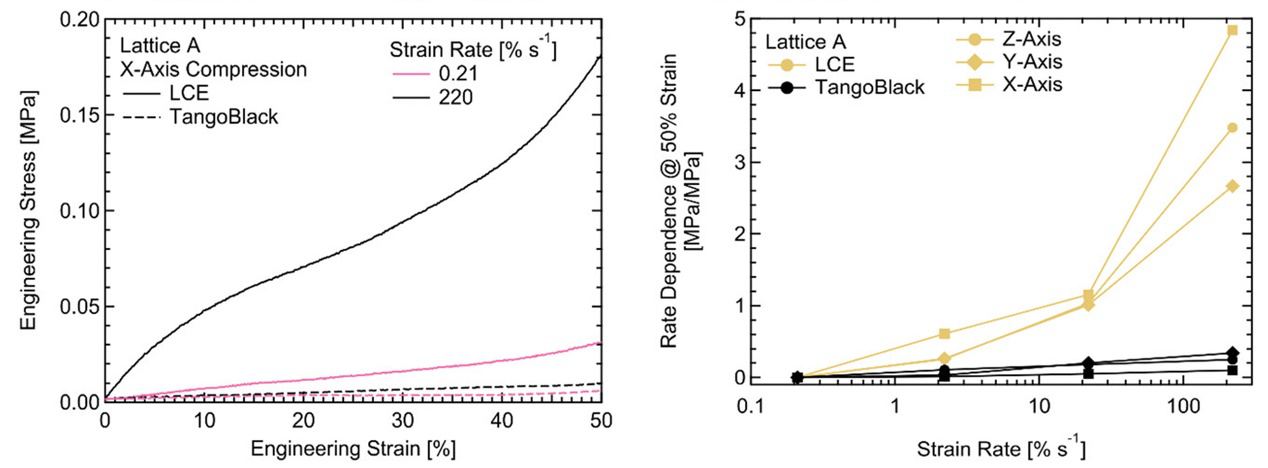Sport could be significantly safer through the use of liquid crystals in helmets
Jun 30, 2020
Biological tissues have evolved over millennia to be optimized for their function. Cartilage is a compliant, elastic tissue that can cushion joints but can resist compression while withstanding the substantial load bearing of our bodies. It is vital for running, jumping, and our daily wear and tear.
On June 8, () collaborated with from , ), published a ground-breaking article on the high-impact academic journal Advanced Materials (IF = 25.809). The paper was titled “.” The paper sought to develop a UV-curable resin in conjunction with 3D printing technology to fabricate a lightweight energy-absorbing structure made of liquid crystal elastomers (LCEs).
The current method used to 3D print energy-absorbing structures uses structural energy dissipation by deforming 3D lattice structures. These structures tend to have specific geometric designs or are built of slender bars that buckle under compression. The materials used for these structures are elastomers. The energy dissipation property of viscoelastic materials has not been investigated adequately for use in creating 3D emergy absorbing structures.
LCEs are tricky to manipulate. Until now, most researchers could create either large objects with minimal detail or great detail in practically microscopic structures. But as with phone screens, large devices with high resolutions are where the future lies. LCEs also exhibit nonlinear large-deformation viscoelastic mechanical behavior and are remarkable energy-absorbing materials.
The research team developed a photocurable LCE resin that, when hit with ultraviolet light, cures, forming new bonds in a series of thin layers. The final cured resin forms a compliant and robust elastomer. It is printed in lattice structures to mimic a variety of different structures.
The research team printed several structures, including a tiny, detailed lotus flower and a prototype of a spinal fusion cage, creating the largest LCE device with the most detail. (Figure 1).

Figure 1. DLP based 3D printing technology to fabricate LCE 3D structures.
The combination of the resin and printing process also led to 12 times greater rate-dependence and up to 27 times greater strain–energy dissipation compared to those printed from a commercially available photocurable elastomer resin (Figure 2, 3).

Figure 2. The loading-rate dependent nonlinear large deformation mechanical behavior of LCE.

Figure 3. Comparison of energy absorption efficiency between the structures printed with LCE and conventional elastomer.
In the future, the structures have several applications, including shock-absorbing football helmet foam. It could provide significant opportunities for safer sporting environments while protecting children during youth sport while their brains are still developing.
Qi Ge and Christopher M. Yakacki are the corresponding authors of this research article.
Latest News
Related News












